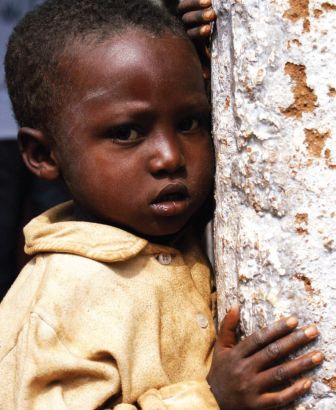UN: Global child deaths down by almost half since 1990
NEW YORK/GENEVA, 13 September 2013 – In 2012, approximately 6.6 million children worldwide – 18,000 children per day – died before reaching their fifth birthday, according to a new report released today by UNICEF, the World Health Organization (WHO), the World Bank Group and the United Nations Department of Economic and Social Affairs/Population Division. This is roughly half the number of under-fives who died in 1990, when more than 12 million children died.
“This trend is a positive one. Millions of lives have been saved,” said Anthony Lake, UNICEF Executive Director. “And we can do still better. Most of these deaths can be prevented, using simple steps that many countries have already put in place – what we need is a greater sense of urgency.”
The leading causes of death among children aged less than five years include pneumonia, prematurity, birth asphyxia, diarrhoea and malaria. Globally, about 45 per cent of under-five deaths are linked to undernutrition.
About half of under-five deaths occur in only five countries: China, Democratic Republic of the Congo, India, Nigeria, and Pakistan. India (22 per cent) and Nigeria (13 per cent) together account for more than one-third of all deaths of children under the age of five.
Newborn children are at particularly high risk
“Care for mother and baby in the first 24 hours of any child’s life is critical for the health and wellbeing of both,” says Dr. Margaret Chan, Director-General at WHO. “Up to half of all newborn deaths occur within the first day.”
The lives of most of these babies could be saved if they had access to some basic health-care services. These include skilled care during and after childbirth; inexpensive medicines such as antibiotics; and practices such as skin-to-skin contact between mothers and their newborn babies and exclusive breastfeeding for the first six months of life.
Progress, challenges
While the global average annual rate of reduction in under-five mortality accelerated from 1.2 per cent a year for the period 1990-1995 to 3.9 per cent for 2005-2012, it remains insufficient to reach Millennium Development Goal 4 which aims to reduce the under-five mortality rate by two-thirds between 1990 and 2015.
“Continued investments by countries to strengthen health systems are essential to ensure that all mothers and children can get the affordable, quality care they need to live healthy, productive lives,” said Keith Hansen, Acting Vice President of Human Development at the World Bank Group.
Sub-Saharan Africa, in particular, faces significant challenges as the region with the highest child mortality rates in the world. With a rate of 98 deaths per 1000 live births, a child born in sub-Saharan Africa faces more than 16 times the risk of dying before his or her fifth birthday than a child born in a high-income country.
However, sub-Saharan Africa has shown remarkable acceleration in its progress, with the annual rate of reduction in deaths increasing from 0.8 per cent in 1990-1995 to 4.1 per cent in 2005-2012. This is the result of sound government policies, prioritized investments and actions to address the key causes of child mortality and reach even the most difficult to reach populations.
Global and national action to improve child health
Both globally and in countries, a series of initiatives are in place aimed at improving access to maternal and child health care, inspired by the United Nations Secretary-General’s widely endorsed Global Strategy for Women’s and Children’s Health, which aims to save 16 million lives by 2015 through a “continuum of care” approach.
As part of this strategy, focus on specific areas is given through:
- A Global Vaccine Action Plan that is working towards universal access to immunization by 2020. Vaccination against preventable diseases is one of most effective country-driven and globally-supported actions, as it currently averts an estimated two to three million deaths every year in all age groups from diphtheria, tetanus, pertussis (whooping cough), and measles. In 2012, an estimated 83 per cent (111 million) of infants worldwide were vaccinated with three doses of diphtheria-tetanus-pertussis (DTP3) vaccine.
- Some 176 countries have signed on to A Promise Renewed – the call to action spearheaded by the Governments of Ethiopia, India and the United States, together with UNICEF in a global effort to stop children from dying of causes that are easily prevented.
- The United Nations Commission on Life-Saving Commodities for Women and Children is helping countries improve access to priority medicines such as basic antibiotics and oral rehydration salts.
- Earlier this year, WHO and UNICEF joined other partners in establishing a new Global Action Plan for Pneumonia and Diarrhoea which aims to end preventable child deaths from these two major killers of under-fives by 2025. The plan promotes practices known to protect children from disease, such as creating a healthy home environment, and measures to ensure that every child has access to proven and appropriate preventive and treatment measures.
- Similarly, partners are working on Every Newborn: a global action plan to end preventable deaths. The aim is to launch this global newborn action plan in May 2014 and provide strategic directions to prevent and manage the most common causes of newborn mortality, which account for around 44 per cent of all under-five mortality.
- UNICEF, WHO and the World Bank Group all support the Scaling Up Nutrition (SUN) global movement in its efforts to collaborate with countries to implement programmes to address poor nutrition at scale with a core focus on empowering women.
“Global partnerships to further accelerate the reduction of under-five mortality globally and in sub-Saharan Africa are essential,” said Wu Hongbo, Under-Secretary-General for Economic and Social Affairs at the United Nations. “In this regard, it is critical that national governments and development partners redouble efforts through to the end of 2015 and beyond.”
NOTE: Global estimates of child mortality are challenging to produce because many countries lack complete systems to track vital records. The estimates released today are based on statistical models and data from a variety of sources, including household surveys and censuses. All the numbers cited here fall within a statistical confidence range. For example, the estimated global number of 6.6 million deaths in 2012 falls within the statistical confidence range from 6.3 to 7.0.
About UN Inter-agency Group for Child Mortality Estimation (IGME)
The report Levels & Trends in Child Mortality was produced by the IGME, which is led by UNICEF and the World Health Organization, and also includes the World Bank and the United Nations Population Division of the Department of Economic and Social Affairs. IGME was formed in 2004 to share data on child mortality, harmonize estimates within the UN system, improve methods for child mortality estimation report on progress towards the Millennium Development Goals and enhance country capacity to produce timely and properly assessed estimates of child mortality. For more information visit: www.childmortality.org
About UNICEF
UNICEF works in more than 190 countries and territories to help children survive and thrive, from early childhood through adolescence. The world’s largest provider of vaccines for developing countries, UNICEF supports child health and nutrition, good water and sanitation, quality basic education for all boys and girls, and the protection of children from violence, exploitation, and AIDS. UNICEF is funded entirely by the voluntary contributions of individuals, businesses, foundations and governments. For more information visit: www.unicef.org Follow us on Twitter and Facebook
About the World Health Organization (WHO)
WHO is the directing and coordinating authority for health within the United Nations system. It is responsible for providing leadership on global health matters, shaping the health research agenda, setting norms and standards, articulating evidence-based policy options, providing technical support to countries, and monitoring and assessing health trends and improving global health security. For more information visit www.who.int
About the World Bank Group
The World Bank Group is a vital source of financial and technical assistance to developing countries around the world, with the goals of ending extreme poverty and boosting shared prosperity. Improving health is integral to achieving these goals. The Bank Group provides financing, state-of-the-art analysis, and policy advice to help countries expand access to quality, affordable health care; protect people from falling into poverty or worsening poverty due to illness; and promote investments in all sectors that form the foundation of healthy societies. For more information visit: www.worldbank.org/health Follow us on Twitter
Child Mortality 2013 estimates
Stay with Sierra Express Media, for your trusted place in news!
© 2013, https:. All rights reserved.




